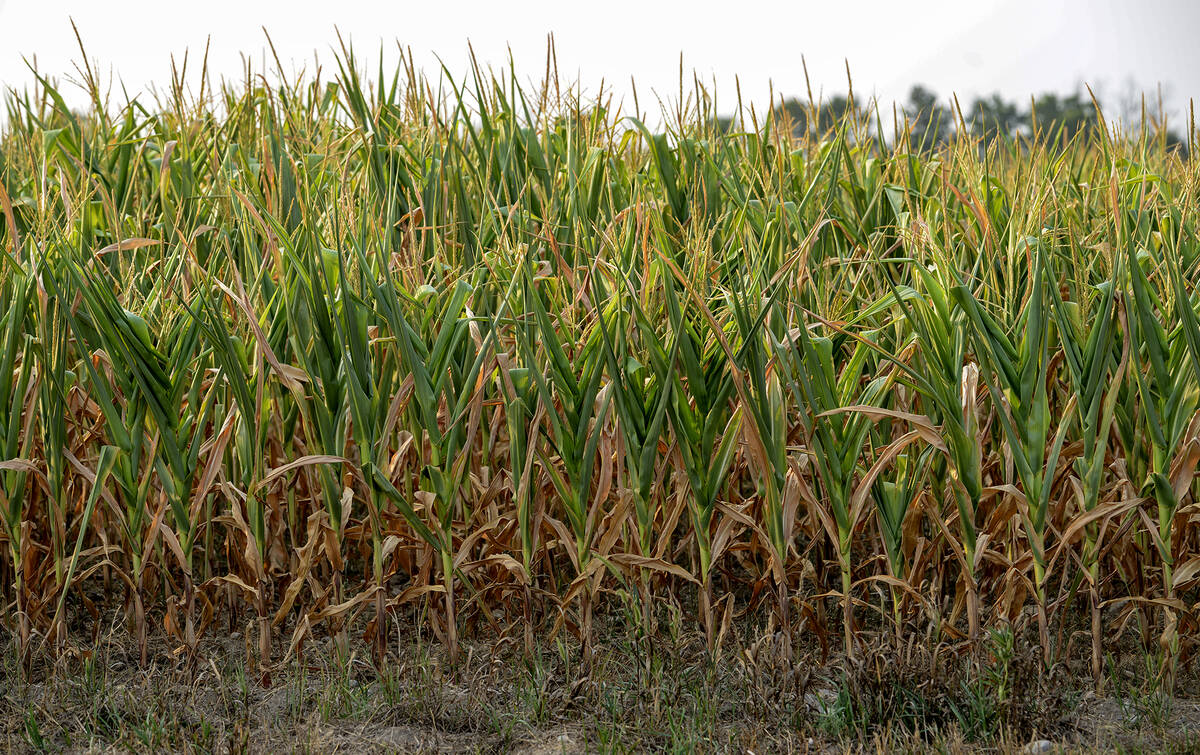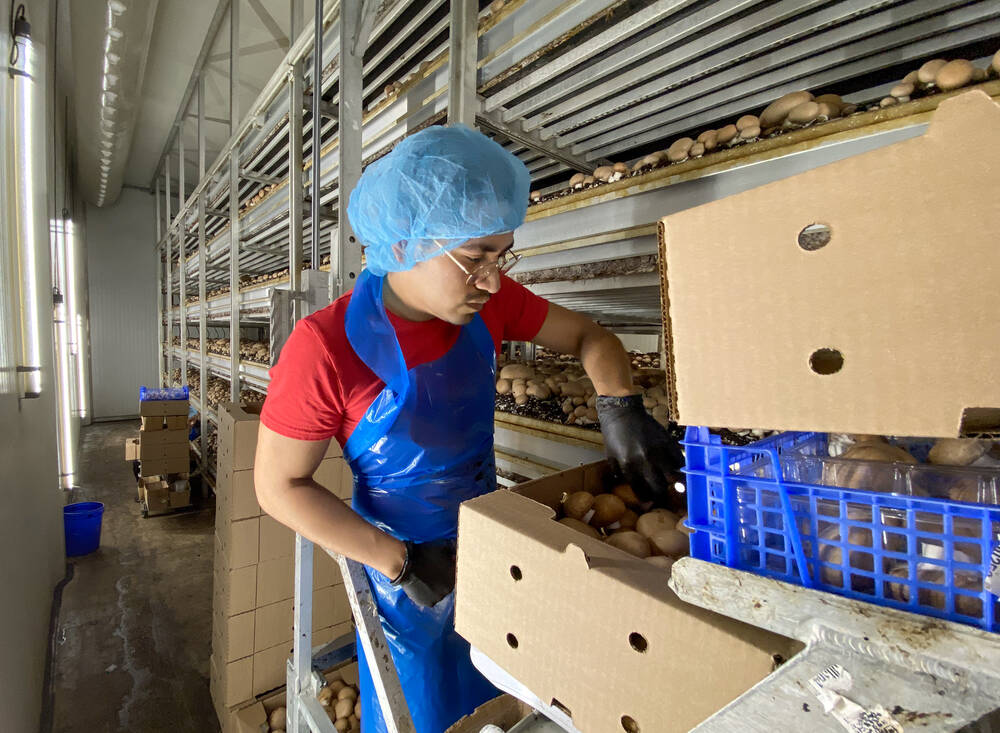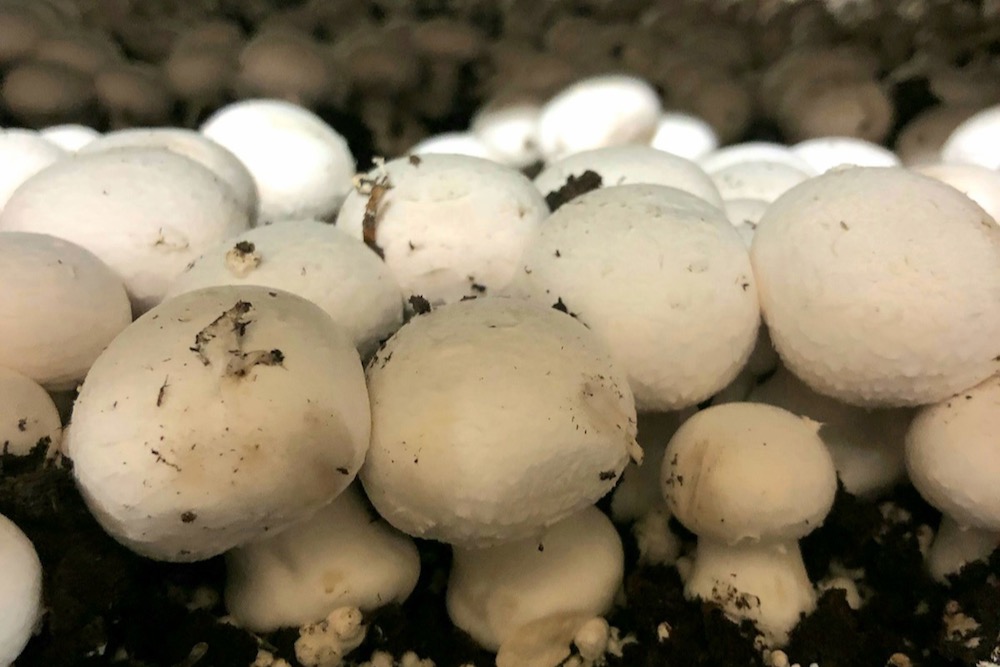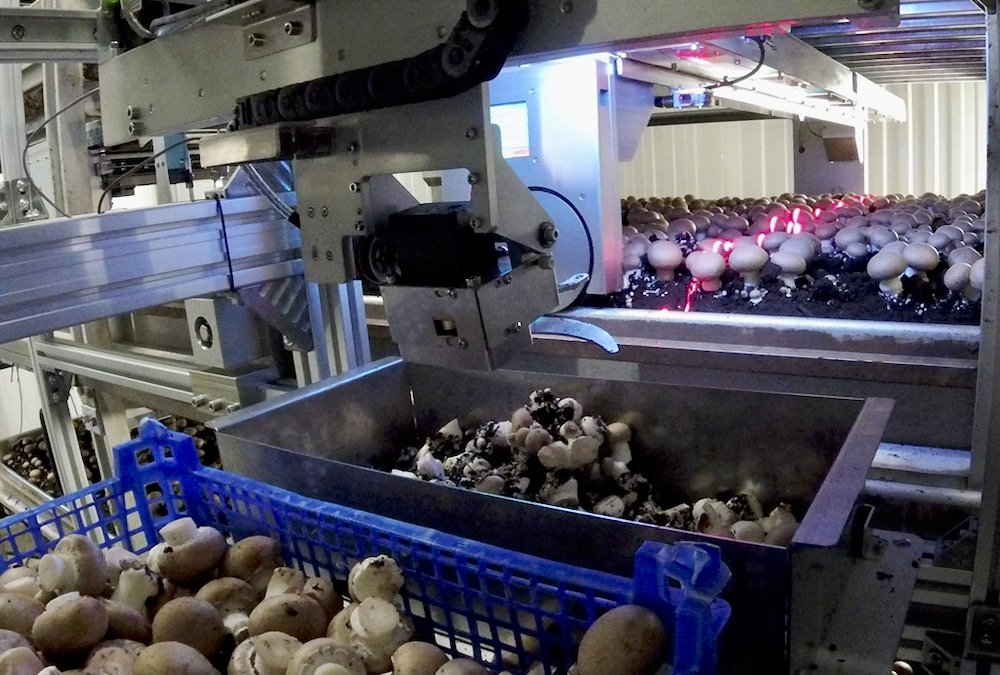The Piccioni Bros Mushroom Farm in Dundas, Ont., like the sector itself, has grown and evolved over the past 60 years.
Lorenzo Piccioni said when his father and uncle started the business in 1964, they produced approximately 15,000 to 20,000 pounds of white mushrooms a week, mainly for the canned market.
Why it matters: Ninety per cent of mushrooms grown year-round in Canada are Agaricus (white, button, cremini, portabella), explained Marian Muth, Mushrooms Canada program manager.
Read Also

Extreme variability marks Ontario’s 2025 corn crop
The yield potential of Ontario’s 2025 corn crop was lost in some areas due to extreme dry conditions.
The facility now boasts 38 grow rooms, which produce 220,000 pounds of mushrooms weekly for the direct delivery fresh market serving Loblaw, Longo’s, Costco and the Ontario Food terminal.
“The brown market has steadily grown; now we grow around 60 per cent white and 40 per cent brown and portobellos,” he said. “We have some pizzeria customers where we’ll do slices, but not too much canning. There are not enough dollars in (it).”
PHOTOS: Tour of Piccioni Bros Mushroom Farm
Despite their small stature, mushrooms carry a significant health punch. For example, a portabella mushroom contains roughly the same amount of potassium as a banana.
Mushrooms are a source of antioxidants, including ergothioneine, which could help with aging, cognition and brain health, prebiotic fibre, and naturally occurring vitamin D, which increases if left in the sun 10 to 15 minutes before use.
“Around 40 per cent of the mushrooms produced in Canada are exported,” said Muth. “Canada is in the top three value exporters (globally) — we’re always competing with China and Poland.”
A key selling point of mushrooms is sustainability, “you can grow up to one million pounds of mushrooms on just one acre of land,” Muth said.
Piccioni explained that each grow room requires approximately 38 metric tonnes of substrate. Initially created on-farm, they joined forces with two other farms 14 years ago to build a compost facility that provides them with Phase Three compost, which has integrated mushroom spawn.
“It takes about two hours to do a room,” Piccioni said. “And then 14 days later, roughly, we’re harvesting mushrooms.”
Piccioni’s sister, Anna Maria, is the farm’s grower. He said having a female grower is an industry anomaly, but her skills are vital to their success.
The growing cycle is six to eight weeks, with mushroom size doubling every 24 hours during the fruiting phase. That’s a four per cent increase an hour, and growth continues after being picked.
Once spent, the pasteurized substrate, a mix of farm by-products, including straw and chicken manure, is recycled to organic farms or sold in garden centres as soil.
Labour is a critical challenge for mushroom growers because, with a fast growth rate, missing half a picking day has a compounding effect that’s hard to recover from.
“There is a six-to-eight-hour window (for picking peak quality),” he said. With direct delivery to approximately 70 stores, the mushrooms will be picked, packed and on the shelf within 24 hours.
They employ temporary foreign workers (TFWs), predominantly from Mexico, Guatemala, Thailand, Vietnam and the Philippines. In the 1960s, only one worker spoke English, said Piccioni, but now most are fluent, with multi-generations working on the operation.
“They have apartments near the road, and we also house them in Hamilton on a two-year contract,” said Piccioni. “Usually, they go home for a month, and if everyone is happy, they can return.”
The sector is TFW-dependent, but mainstream media portrayals of the program and producers make it difficult for farms that value and respect workers and don’t abuse the system, Piccioni said.
They use the latest technology in mushroom production out of Holland to improve efficiencies and profitability.
“They’re ahead of us in technology,” said Piccioni. “All the farms in Canada are bringing that technology here.”













